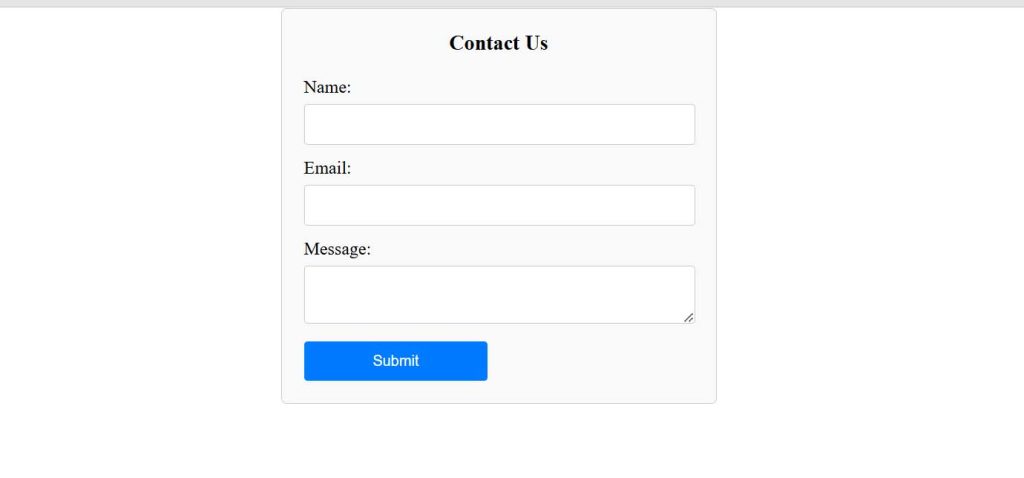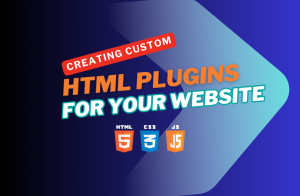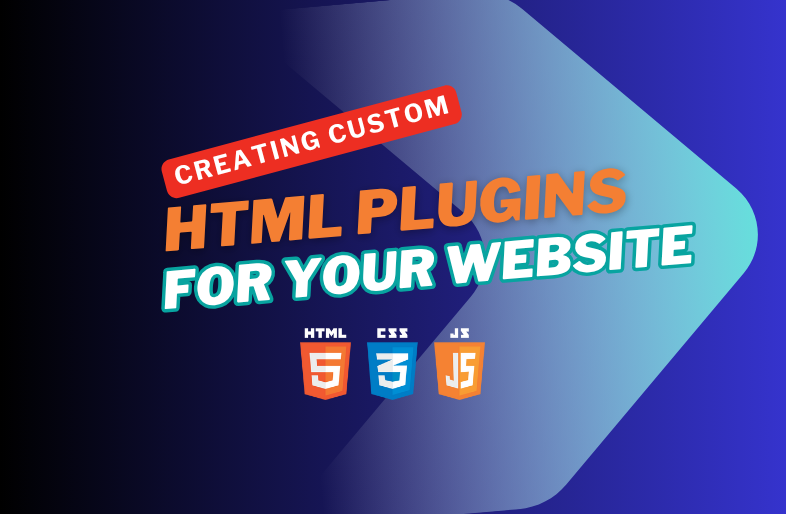Custom HTML plugins on your websites improve its overall functionalities and user experience. Here’s are easy steps to help you create and integrate custom HTML plugins:
Step 1: Define the Purpose of Your Plugin
Before starting, clearly define what you are doing and the purpose of your plugin. For example:
- Add a custom contact form.
- Display dynamic content.
- Integrate a third-party service.
- Create a custom widget (e.g., a weather widget).
Step 2: Plan the Plugin Structure
Decide how your plugin will integrate with your website:
- Standalone HTML/CSS/JS: A simple plugin that can be embedded directly into your site.
- Reusable Component: A plugin that can be used across multiple pages or websites.
- Dynamic Plugin: A plugin that interacts with a backend or API.
Step 3: Write the HTML
Create the basic structure of your plugin using HTML. For example, if you’re creating a custom contact form:
<!doctype html>
<html class="no-js" lang="zxx">
<head>
<meta charset="utf-8">
<meta http-equiv="x-ua-compatible" content="ie=edge">
<title>Creating custom HTML plugin</title>
<!-- CSS here -->
<link rel="stylesheet" href="style.css">
</head>
<body>
<div class="custom-contact-form">
<h3>Contact Us</h3>
<form id="contactForm">
<label for="name">Name:</label>
<input type="text" id="name" name="name" required>
<label for="email">Email:</label>
<input type="email" id="email" name="email" required>
<label for="message">Message:</label>
<textarea id="message" name="message" required></textarea>
<button type="submit">Submit</button>
</form>
</div>
<!-- JS here -->
<script src="main.js"></script>
</body>
</html>
Step 4: Add CSS for Styling
Style your plugin using CSS to ensure it matches your website’s design. For example:
*{
padding: 0px;
margin: 0px;
}
.custom-contact-form {
max-width: 350px;
margin: 0 auto;
padding: 20px;
border: 1px solid #ccc;
border-radius: 5px;
background-color: #f9f9f9;
}
.custom-contact-form h3 {
text-align: center;
margin-bottom: 20px;
}
.custom-contact-form form{
padding-right: 20px;
}
.custom-contact-form input,
.custom-contact-form textarea {
width: 100%;
padding: 10px;
margin: 6px 0px 12px;
border: 1px solid #ccc;
border-radius: 3px;
margin-right: 20px;
}
.custom-contact-form button {
width: 50%;
padding: 10px;
background-color: #007bff;
color: white;
border: none;
border-radius: 3px;
cursor: pointer;
}
.custom-contact-form button:hover {
background-color: #0056b3;
}
Step 5: Add JavaScript for Interactivity
If your plugin requires interactivity (e.g., form submission, dynamic content), use JavaScript. For example:
document.getElementById('contactForm').addEventListener('submit', function(event) {
event.preventDefault(); // Prevent form submission
// Get form data
const name = document.getElementById('name').value;
const email = document.getElementById('email').value;
const message = document.getElementById('message').value;
// Validate data (optional)
if (!name || !email || !message) {
alert('Please fill out all fields.');
return;
}
// Send data to a server or API (example using Fetch API)
fetch('https://your-server.com/submit-form', {
method: 'POST',
headers: {
'Content-Type': 'application/json',
},
body: JSON.stringify({ name, email, message }),
})
.then(response => response.json())
.then(data => {
alert('Form submitted successfully!');
document.getElementById('contactForm').reset(); // Clear form
})
.catch(error => {
console.error('Error:', error);
alert('An error occurred. Please try again.');
});
});
Step 6: Make the Plugin Reusable
To make your plugin reusable across multiple pages or websites:
- Encapsulate the Code: Wrap your HTML, CSS, and JavaScript in a single file or component.
- Use a Framework: If your website uses a framework like React, Vue, or Angular, create a component for your plugin.
- Externalize Resources: Store your CSS and JavaScript in separate files and link them in your HTML.
Step 7: Test Your Plugin
- Test your plugin on different browsers and devices to ensure compatibility.
- Check for responsiveness and usability.

Step 8: Integrate the Plugin into Your Website
- Embed Directly: Copy and paste the HTML, CSS, and JavaScript into your website’s code.
- Use a Script Tag: If your plugin is in a separate JavaScript file, include it using a <script> tag.
By using this, the functionality of your website can be improved, as well as the overall user experience and feel by building custom HTML plugins using these instructions.

